Fr
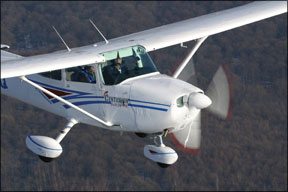
Gearbox lubricant? Jet fuel? What the heck is this, a turboprop Skyhawk? Nope, its a Thielert Centurion 1.7 aerodiesel conversion of the Skyhawk, one of the first in fleet service in the U.S. and perhaps the leading edge of the inevitable diesel revolution as avgas roller coasters between $3 and $7 a gallon. We recently flew the airplane it flies like a Skyhawk, were happy to report but thats not the real story. The real story is that this conversion is in work-a-day commercial service and the company that paid for it believes that the economics pencil out to be superior to the Lycoming engine the Skyhawk left the factory with.
Why Convert?
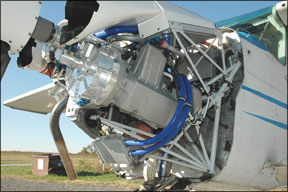
Stan Fetter of Fetter Aviation, a Maryland-based operation within shouting distance of Washington, D.C., owns the Skyhawk. Each morning and afternoon, his airplanes are aloft with a pilot and traffic reporter, detailing the regions legendary surface snarls and rush-hour wrecks. He owns two Skyhawks and leases two more to ensure that he can meet his dispatch needs. Fetters aircraft fly an average of six hours a day, between 1000 and 1200 hours a year. With that kind of tempo, reliability is critical. So are operating costs.
The airplane flown for this article is a 1980 172N and has many more hours than your typical Skyhawk. Fetter bought the former Embry-Riddle Aeronautical University trainer with about 10,000 hours on it. It now has some 17,000 hours and looks it; in this business, cosmetics don’t matter. Despite having had relatively good luck with Lycoming O-320-H2AD engines, Fetter made a major investment in Thielerts liquid-cooled diesels.
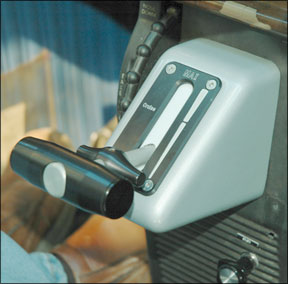
Here are the numbers: Fetter says he gets about 2200 hours from one of the Lycomings before overhauling it; keys include daily, standardized operation, regular oil changes and using Tanis kits to preheat the engines. But a bad magneto during the run-up can mean an hours delay in switching equipment and doing the paperwork necessary before launching into the D.C.-areas security-paranoid airspace. While its way too early to establish a track record, no planned flights of N73FR have been canceled since the diesel conversion.
Fetters decision to convert two of his fleet to the Thielert diesel he had a 1977 Skyhawk in the shop for the second conversion when we flew N73FR is based as much on the technology as the economics. “There’s no reason to still be operating with magnetos and carburetors in 2006,” he told us. A little bit of a techno-geek, Fetter thoroughly researched the conversion before writing checks and is convinced his decision will make him money after about 18 months, once the Lycomings historical operating costs overtake
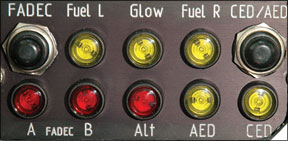
his savings in downtime, maintenance and fuel.
“The big manufacturers have about three years to put this engine on their new aircraft before someone does it for them,” Fetter says. “There’s no excuse for manufacturers to sell a new $250,000 airplane with the same junk and the same problems as a 30-year-old aircraft.”
The Details
As weve reported previously, Thielerts Centurion 1.7 is a liquid-cooled, in-line, four-stroke, four-cylinder dual overhead camshaft powerplant, based on a Mercedes-Benz automotive engine. As installed in Fetters Skyhawk, its a direct-injection FADEC-controlled diesel driving the prop through a 1.69:1-ratio reduction gearbox.
The conversion 160 man hours of work is done by a number of U.S. shops. Fetter used Epic Aviation (386-409-5583, www.epicaviation.com) at New Smyrna Beach, Florida . Fetters people flew N73FR to Florida and flew it home three weeks later with the new engine. Cost: $63,000 and change: $50,000 for the engine, plus $13,000 for the conversion.
As the price tag hints, converting to a diesel involves more than just hanging a different four-banger on the pointy end. The fully STCd Thielert package for the 172 arrives at the shop palletized and ready to bolt onto a clean firewall. The engine is already in its mounts; the turbo and all accessories are attached. The prop, an MT composite, is also part of the deal. Changes to the airframe include larger restrictors in the fuel tanks plus new filler caps, a heated fuel selector valve, a header tank mounted under the floorboards and two new fuel-sampling points in the belly. The Skyhawks push-pull throttle, mixture and carb heat controls are replaced with a new single-handle thrust lever.
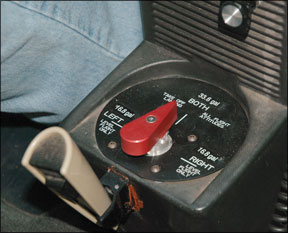
Since twin full-authority digital engine controls (FADECs) mounted on the cabin side of the firewall manage the power, some additional wiring, switches and instruments are necessary. Perhaps most prominent is the FADEC annunciator panel mounted to the lower left of the pilots yoke in Fetters airplane. This panel includes FADEC annunciator lights and push-to-test buttons displaying the systems basic status. For more details, an installed pigtail can be connected to a laptop computer running Thielerts software to do real-time diagnostics and download stored data, which is sent to the manufacturer for analysis.
Gone is the traditional magneto switch, its basic function replaced by the FADEC panel and another guarded switch to force the backup FADEC online for preflight test. Also gone are the traditional analog tachometer and engine instruments. In their places are two three-inch digital gauges providing at-a-glance information on the engines health and power setting; if all the LEDs are green, worry about flying the airplane instead of the engine. In addition to RPM, those instruments also provide oil pressure, fuel flow, amps and voltage, plus coolant, gearbox, oil and fuel temperatures. Another parameter is the power percentage being produced, termed “load.” The only original gauges remaining are for fuel quantity.
Differences
There are other differences, to be sure. For one, the turbocharged 1.7-liter engine generates 135 HP, 25-HP less than the Lycoming. Some of that difference is noticeable but, since its turbocharged, the higher you climb, the less you notice. Also, the conversion adds some 66 pounds to the empty airplane, all of it forward of the CG. The STC requires weighing the airplane after the installation; Fetter says he lost about 66 pounds of useful load from the conversion, leaving him with 701 pounds. The airplane usually is flown with two adults and some backseat broadcasting equipment, but remains we’ll within both the CG and gross weight limits. Its a bit nose-heavy, though, and carrying a third person probably means offloading some fuel. Preflight inspection is straightforward, with the exception of checking two additional fuel sumps in the belly and the gearbox lubricant level. Coolant level is checked via an LED on the instrument panel.
Another difference is the amount of fuel carried. The STC imposes a limitation on the fuels weight and since Jet A is heavier than avgas, the standard 40-gallon fuel capacity is limited to 36.8 gallons by installing an indicator tab. But thats OK, since the diesel doesnt use much fuel to begin with. According to Fetters flight logs for N73FR, a recent four-hour traffic flight consumed only 14.6 gallons. Thats at reduced power, of course, but Fetter took the airplane on a weekend cross-country, putting 2.9 hours on it. The round-trip fuel burn at higher power settings: 12.3 gallons. With 33.8 gallons usable, endurance isn’t an issue.
Economics
And that highlights one of the reasons Fetter opted to go diesel. In addition to burning less of it, Jet A is cheaper than avgas, at least at his homebase. At other airports, the reverse may be true. But generally, you can expect to find a 10- to 40-cent price Delta in favor of Jet A. For now, Thielert has set the engines TBR (time before replacement) at 1400 hours, but expects it to increase to 2400 hours eventually. Instead of overhauling, its simply unbolted from the firewall mount, accessories and all and a new powerplant is bolted on. Fetter expects to pay $24,000 for the new engine.
At the 100-hour inspection, the oil is changed, the engine is inspected for leaks and the FADEC data downloaded and sent to Thielert for analysis. Other expenses include a prop overhaul at 1500 hours, costing between $500 for typical work to $1500 if all three blades need replacing. Thats probably a wash with the Lycoming.
Fetter estimates his costs, before fuel, to run the Thielert diesel will be $13.71 an hour, versus about $20 per hour for the Lycoming O-320-H2AD. And its easy for him to be so exact. Hes got years of documented experience with the Lycoming and Thielerts engines come with a limited, pro-rated warranty up to the 2400-hour TBR. If it hiccups, it goes back to the company and a new engine is fitted. The operator pays only the pro-rated difference in cost between a new engine and the hours flown by the old one.
Flying It
Preflight on a diesel airplane isn’t especially weird, but does require checking the gearbox oil level and handling kerosene rather than avgas. Starting the engine is absolutely automotive. Since the FADEC manages all of this, our role was limited to ensuring the thrust lever was in its idle position and flicking on the engine master. Once its activated, the FADEC panel comes alive.
When the red glow plug light goes out, were ready. Still ignoring the thrust lever, the engine comes to life within three blades. The Thielert immediately settles into an 890 RPM idle thats quieter and less rattlely than the Lycoming. Ground operations are conventional, perhaps with a bit more brake necessary than usual because of the idle speed thats a bit faster than the gasoline-powered 172. But, if you can keep a stock Skyhawk on the taxiway centerline, this one will be easy to handle. On the ground, throttle is needed only to break away from parking.
Once in the runup block, the FADEC does its thing. It runs its own self-diagnostic, which increases RPM, cycles the prop and performs the equivalent of a mag check by switching from one FADEC to another and back to both. Aside from normal cockpit chores, the only other runup item is to fully advance the thrust lever to ensure the prop reaches its full-rated 2300 RPM. Takeoff and initial climb are pure Skyhawk: Advance the power to full, scan the gauges, lift the nosewheel and fly. Immediately noticeable is the reduced vibration; the three-blade MT prop and the exhaust-driven turbo work together to keep down the noise. In fact, there is no muffler on this engine; its not necessary.
Once out of the pattern, flying the Thielert conversion is pure Skyhawk, except there’s no mixture to fuss with. There was a bit of power fine-tuning, but that mostly involved operator error, instead of any turbo bootstrapping. For N73FRs traffic-reporting mission, Fetters pilots set up 59 percent, which yielded about 90 KIAS on this 55-degree F day. We were burning only 4.4 gallons of Jet A an hour.
Yes, the horsepower difference makes it a bit more anemic than a gas-powered 172 at lower altitudes, especially for initial climb. Comparing the POHs gives about a 50 FPM advantage to the gasoline engine at sea level but at 5000 feet and above, the diesel enjoys a better climb rate. Cruise wise, at low altitudes below 5000 feet the diesel is slower by about a couple of knots when the two are compared at higher power settings, according to the POHs.
The diesel versions best speed is between 10,000 and 12,000 feet 114 knots, according to the POH. At that point, its 10 knots faster than the gasoline version, but burning 2 GPH less fuel.
Because of the lower fuel burn, the diesel Skyhawk has better endurance at typical power settings. For instance, at 7500 feet, the gasoline version will fly 5.3 hours to dry tanks at 65 percent power. The diesel version will last for 7 hours. At that altitude, they fly at nearly the same speed so the diesel version will fly some 175 miles further. Also, its likely to have better capability in overtopping weather, thanks to the turbocharging.
Because of the higher idle speed, slowing down for approach and landing takes a little more planning. But when was the last time you had trouble slowing a Skyhawk? We suspect after flying it for a few hours, this issue wouldnt be noticeable.
Conclusion
Is the Thielert diesel conversion for every Skyhawk owner? No. For one thing, buying into it can meet or exceed the value of the original airplane. (Average retail on a 1980 Cessna 172 is $57,000.) And, while conversion from the conventional throttle, mixture and carb heat controls to a single thrust lever simplifies engine operation, that may not be desirable for an airplane used as a primary trainer.
On the other hand, if the pilots being trained will go directly to turbine equipment, it might be a plus. The bottom line is if you depend on getting airborne every day traffic reporting, check hauling, banner towing, photography, flight training the numbers on the conversion look appealing, provided the Centurion 1.7 lives up to TBR claims and doesnt develop an appetite for expensive mid-time maintenance. These are, at present, unknowns.
For the rest of us, we agree with Stan Fetter. The U.S. industry will eventually be led to diesel technology by its customers as a means of self-preservation. It might not happen next month or next year, but five years from now, we predict the landscape will be more than dotted with aerodiesels.
Jeb Burnside is editor of
Aviation Consumers sister magazine, Aviation Safety. See www.trafficplanes.com for more.

